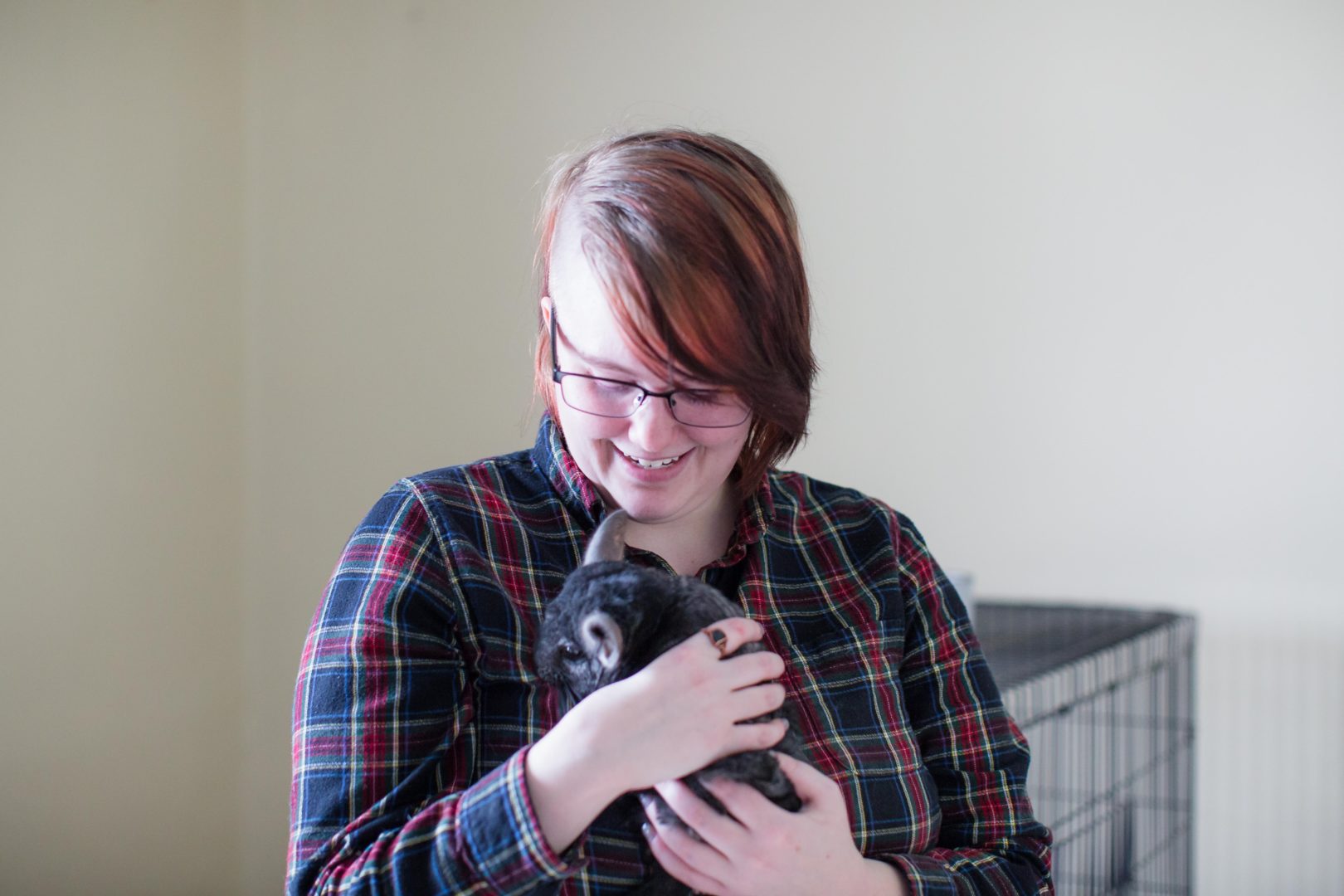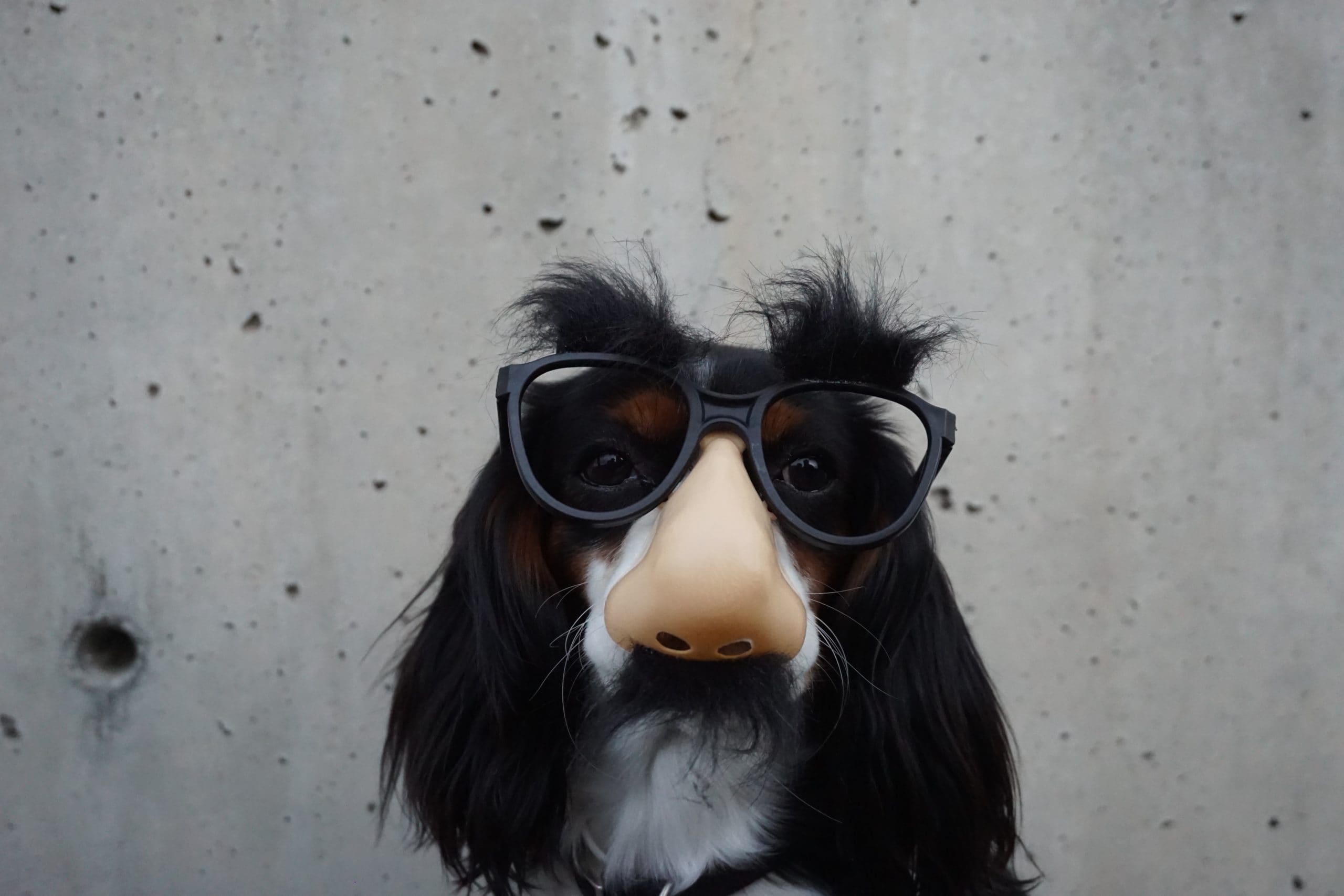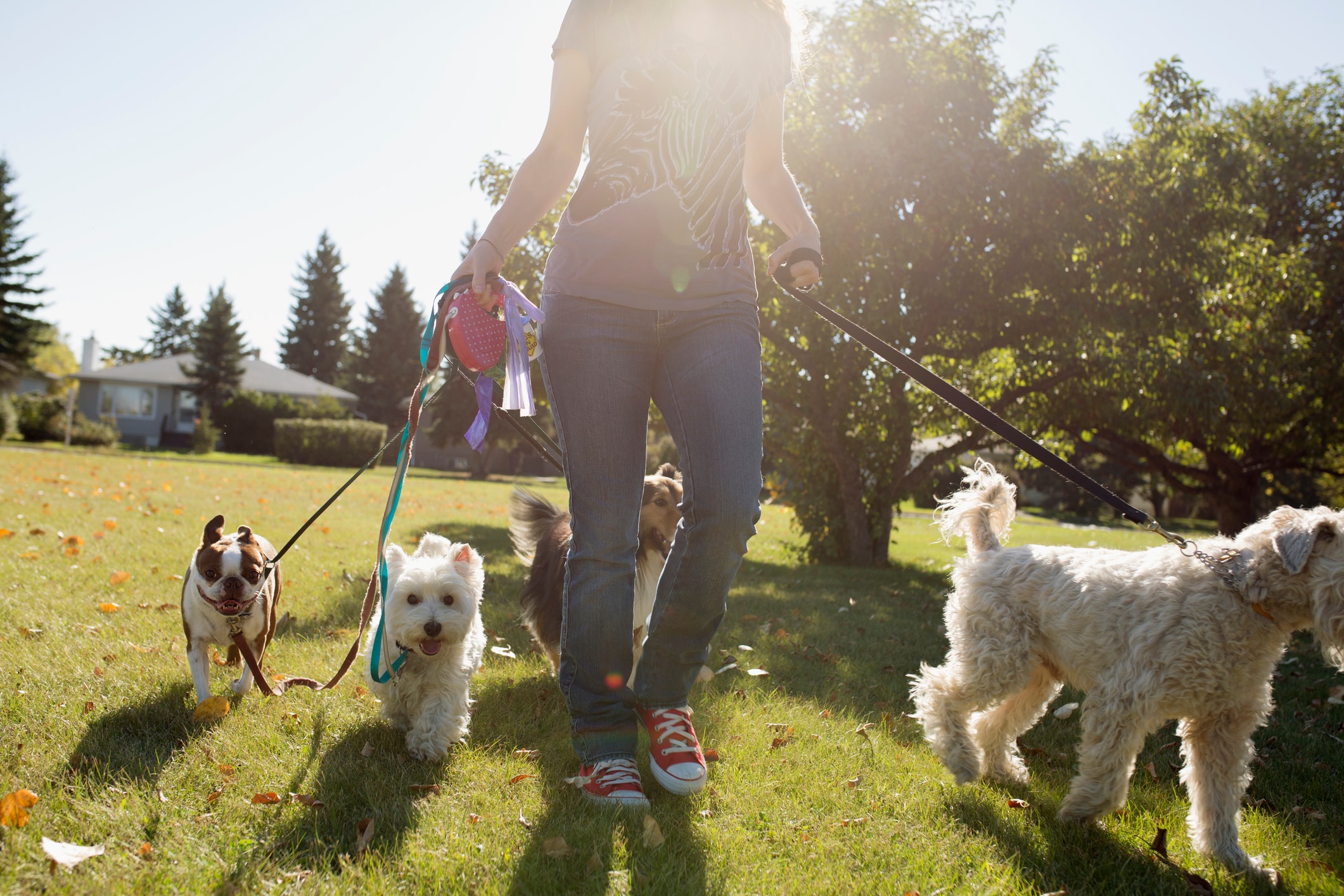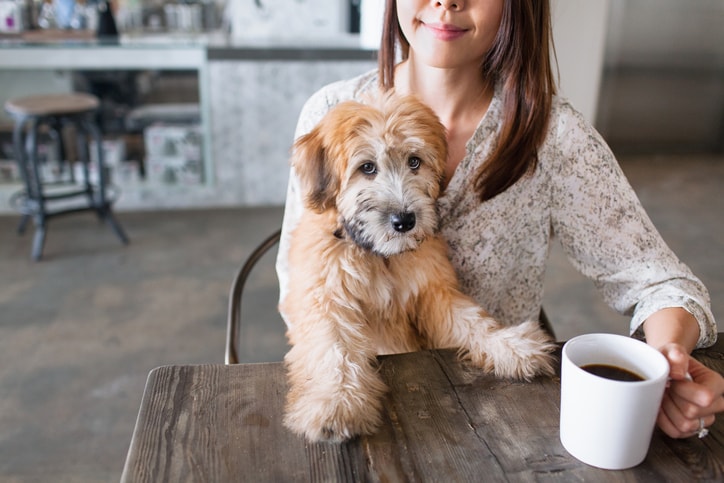One night this past winter, Sarah M. came home to find a package on the doorstep.
“There was a shoebox on the porch, so I opened it,” Sarah says. “Inside were three rats.”
Most people would scream bloody murder, drop the box, and call the cops. Instead, the 25-year-old scooped up the container and drove the rodents to an emergency vet to have them checked out—the sort of concerned response their anonymous depositor likely anticipated.
Sarah’s reputation as an exceptional pet caregiver—one with a special affection for creatures that have fallen between the cracks—is getting around.
“Now I’m trying to re-home three rats,” Sarah shrugs.
No big deal: At the moment, they keep 14 roommates, none of them human. (Per Sarah’s request, we are using the non-gender-specific pronoun “they” in this profile.) Six are Sarah’s personal pets: Three guinea pigs, two of which have special needs; an 11-year-old tabby cat with a significant brain injury; an Egyptian spiny mouse that sometimes draws blood when he bites; and an “adorable” hognose snake hatchling that eats frozen-and-thawed newborn mice for dinner. Sarah’s other eight tenants are a mix of orphans and subletters: Three fluffy chinchillas, one of which has a heart murmur; two cockatiels recently rescued from the household of a feather-plucking child; and that triumvirate of rats recently dumped on their porch.
“I hope that doesn’t happen again,” Sarah says somberly. Sarah’s home, after all, isn’t a shelter. “But they are the sweetest little things.”
Thanks to its relaxed regulations on animals, Minneapolis has become a kind of mecca for exotic pets. But even in a city with vibrant pet care– and animal-enthusiast communities, Sarah stands out. Over the last 15 years, Sarah has tended to an extravagant menagerie that includes dogs, cats, guinea pigs, rabbits, turtles, parrots, horses, chickens, iguanas, doves, salamanders, budgies, sugar gliders, boas, hermit crabs, frogs, koalas, tarantulas, mice, fish, and an eight-foot ball python named David. In addition to Sarah’s day-to-day pet care gigs, they also provide long-term boarding for caged animals, sharing their three-bedroom, two-floor house, which has played host to anywhere from 10 to 25 critters at once. A do-it-yourself Dr. Doolittle for the millennial age, Sarah is just as likely to describe vagrant rats as “sweet” as calico cats. Domestics and exotics, the pets they have worked with range, in scale and charm, from friendly chihuahuas and bottle-fed kittens to hairy spiders and eight-foot reptilian predators that, in Sarah’s estimation, “could tear off your calf muscle.”
But beyond species or exoticism, Sarah’s ethic of inclusion also extends to animals with special needs: Animals with chronic illnesses, physical disabilities, impairments, emotional issues, or behavioral problems. In the last year alone, Sarah has treated an iguana with a skin infection, finger-fed chicken and rice to a pug recovering from cancer surgery, and nursed a sickly chinchilla from a lethargic, near-death state to a sprightly, wheel-spinning furball.
“I’ve always kind of identified with special-needs animals,” says Sarah. “I have a couple special needs of my own.”
Although pet care has become the cornerstone of Sarah’s adult life, it’s not their full-time gig. By day, the University of Wisconsin–River Falls graduate is a social worker at Minnesota Vocational Rehabilitation, where they help people with disabilities navigate the tangled bureaucracy of financial and institutional support. Sarah also volunteers to tutor recent U.S. immigrants in literacy and teaches self-defense classes, but they are especially—and admittedly—fond of animals.
“I love animals because I think they’re little easier to relate to than some humans,” Sarah explains.
Sarah’s always been an animal person, but their first pet care gig was around nine or 10. Growing up in Minnesota’s Apple Valley—a 50,000-person suburb just south of the Twin Cities—Sarah loved animals but couldn’t have furry pets because the dander aggravated their twin brother’s asthma. Instead, the siblings had fish.
“You can’t hold a fish, and you can’t pet a fish,” Sarah says. “I wanted more.”
Instead, Sarah and brother Anthony found furry friendship in their Apple Valley neighborhood, a close-knit enclave of families with pets. On the street, Sarah would playfully ambush animals and reflexively ignore their humans.
“I was basically going up to neighbors saying, ‘Hi, can I play with your dog?’ instead of saying, ‘Hi, how are you? How’s your day going?”
That obsession soon became a business. Sarah’s affection attracted the attention of a family, who offered to pay the twins to watch the household cat, Penny, an all-black male named for his shiny, copper-colored eyes.
“I would get home late for supper because I was spending so much time brushing Penny,” Sarah recalls.
From grades 4 through 6, Sarah and Anthony were home-schooled, so when Penny’s guardians added a rat terrier named Sammy to the family brood, they gave the kids $10-a-weekday to walk the dog. Yard by yard, Sarah and Anthony’s clientele steadily expanded: Golden retrievers across the street, some hermit crabs, a beagle named Caesar down the block. When Caesar the beagle’s family adopted a parrot, Sarah’s mind was officially blown. In contrast to the relative obedience of cats and dogs, the parrot was a squawking brute.
“It really struck me as something very clearly wild,” Sarah remembers.
By 12, they’d expanded their pet-sitting to leopard geckos.
Life with humans, though, was harder. In the seventh grade, the twins returned to public school, where Sarah was a target of aggressive bullying.
“I was a very awkward child,” Sarah says.
Admittedly, Sarah had always found it easier to connect with critters than kids: “The language animals speak has always come naturally to me, but the whole social thing with humans does not.”
Yet, Sarah’s peers didn’t just ignore their quirkiness, they actively tried to hurt their feelings. Sarah remembers, “People would pretend to be my friends, then make fun of me and say, ‘How could you think you could ever have friends?’ It was really bad.”
Blessedly for Sarah, Apple Valley was also home to the Minnesota Zoo, a world-class institution that sprawls over 485 acres and miles of walking trails and now contains more than 5,300 animals, some of them endangered. It became Sarah’s sanctuary: a place they frequented so often that, for a time, they’d memorized the text of every exhibition plaque by heart.
“I wanted to be a zookeeper for the longest time. To me, shoveling tiger crap was just a wonderful thing—how could life get any better than that?”

As the bullying at school became worse, Sarah’s reliance on animals became more pronounced. By ninth grade, Anthony’s asthma had improved enough that Sarah was able to adopt two guinea pigs named Thai and Rosi. They became Sarah’s confidantes.
“Once I got home, I could tell them how horrible the kids were.”
At the same time, Sarah had just learned about a remarkable program—a miracle, if you were a kid like Sarah. The Minnesota Zoo had its own high school program: The School of Environmental Studies (SES) — a two-year magnet program for juniors and seniors located on the grounds of the Zoo. In other words, there was a clear and soon-to-be-present way to escape the social abuse and to spend all day with animals. As Sarah puts it, “The Zoo School was just natural for me.”
Run in partnership with the city of Apple Valley, the local school district, and the Minnesota Zoo, SES’s explicit mission was “to create citizen leaders who are environmentally informed, self-perpetuating learners, and connected to the local and global community.” What that meant in practice: An enrollment of about 400 students, who were free to explore its open campus of woods and lake; subjects that spanned marine biology, eco-architecture, and field ornithology; electives like “Wilderness First Aid,” “Animal Care and Handling” (co-taught by actual zookeepers), and “Theater in the City. . . Theater in the Wild.” Projects weren’t hypothetical exercises, but assignments with real-world implications. For example, classes would study the health of an ecosystem and present their findings to the local city council.
“It taught us how to be ethical global citizens,” says Sarah. “Everything it stood for was something I was drawn to.”
SES also offered constant opportunities to learn about—and to care for—animals of all sizes, habitats, and taxonomies. Student IDs granted free admission to the zoo; courses would regularly involve special access to its inhabitants. Among the endangered species, Sarah grew particularly fond of the golden lion tamarins—orangey South American primates with smushed monkey faces that typically weigh less than two pounds—and tapirs, the hook-snouted South American mammals that sort of look like prehistoric anteaters. In addition to the zoo’s population, SES had its own building where the “animal room” was stocked with ferrets, cats, chinchillas, doves, a bearded dragon, a gecko, a salamander, a bunny, a tarantula named Penelope, and a snuggly snake named Sheena.
“Sheena loved cuddling,” reports Sarah. “We would put her down on the floor and people could spoon with her.”
One thing Sarah didn’t expect to find at SES was genuine human connection. But at the Zoo School, Sarah had finally found their tribe.
“It was perfect,” Sarah says. “For the first time, I was able to finally start making friends.”

In 2010, Sarah relocated about 40 miles east, crossing the St. Croix River to attend the University of Wisconsin-River Falls. Even though it seemed like a foregone conclusion that Sarah would study animals, their adolescent experiences with ostracism and bullying had left them wrestling with the arbitrary nature of social injustice.
“When I was a kid, the big thing going through my head was, ‘How is it fair that some people get such a raw deal?’” Sarah says.
Lately, Sarah had started to think about the injuries of inequality as equations that needed to be solved: “If people are experiencing something negative, is there something we can do to alleviate that, both at the interpersonal and the systemic level?”
Being a white, college-educated American meant being afforded certain advantages, Sarah realized, and those could be used to help others rectify their imbalances. And that’s how Sarah ended up majoring in social work.
It was a similar rationale that led Sarah to concentrate on special-needs creatures. Sarah would never stop taking care of animals, of course, and their background made it second nature to accommodate health issues.
“My father needed a pancreas transplant when I was eight, my brother had asthma, and I had—and have—hearing problems,” Sarah says. Then in high school, Sarah’s first two guinea pigs, Thai and Rosi, had medical issues that required injections, which Sarah never hesitated to administer.
“I figured if I’m comfortable doing this,” Sarah says, “I may as well be the one to do it.”
But what haunted Sarah most was this stark reality: Animals with special needs were more likely to end up in shelters, where they’re far less likely to be adopted and thus more likely to be euthanized. Often, they don’t stand a chance. If anybody knows what that feels like, it’s Sarah.
“One of the reasons we think I was bullied when I was a younger is because I’m actually on the autism spectrum,” Sarah explains. When speaking with Sarah, this isn’t something you’d guess—and there’s a good reason for that.
“I was very privileged to have parents who could afford to get me very comprehensive therapy that helps me interact like someone who is a little more neurotypical,” Sarah admits. Now, Sarah wants to be able to do that for others – through their work.
“People never gave me a chance when I had a lot to give,” Sarah says. “People aren’t giving these special needs animals a chance—and they have so much to give and so much to teach us.” And if Sarah wouldn’t, then who would?
Therein lies the inclusive ethos of Sarah Mauser, twentysomething Twin Cities champion of vulnerable beings.
Sarah started boarding animals out of a similar sense of duty. Sifting through listings online, Sarah would regularly see posts from owners seeking long-term boarding—due to inflexible landlords, say, or overseas travel—but there were few local options for special-needs or exotic animal boarders.
“I want to help keep families together,” explains Sarah. “I can only imagine the heartbreak of having to give up an animal permanently—that’s got to be awful—but it’s also got to be really stressful for the pets.” If the animals are surrendered to a shelter, they’re at a high risk of not making it out. “They might not be showing their true personality because they’re scared and they’re not sure what’s going on: ‘Where’d my family go?’”
That probably would have been the case with one of the three chinchillas Sarah is currently fostering. When he first arrived, he was gravely ill—skinny, lethargic, and inexplicably losing chunks of his ears.
“He required critical care—basically force-feeding for hay-based rodents—four times a day for months,” Sarah says. Plus: Different intensive medication therapies, subcutaneous injections, and regular doses of an experimental liver supplement.
“He’s doing so much better,” Sarah says. “He’s running in his wheel now, it’s so great, and his little personality is coming out. He’s a little feisty.”

In 2014, the Peace Corps lost Sarah to a guinea pig. The September after graduation, Sarah came across a Facebook post about a four-month-old piglet whose guardian was threatening to abandon him if someone didn’t take him. Sarah took the pup with the intention of finding him a good home. But then Sarah got attached.
“I was initially like, ‘I’m gonna go into the Peace Corps!’ Then I got this guinea pig, it snowballed from there, and now I live with 14 animals,” Sarah says, laughing. “If you can figure out how that happened, let me know.”
That escalation, roughly, went something like this. Within two months, Sarah adopted another piggy friend and named both guinea pigs Vegeta and Nappa, after an extraterrestrial warrior duo from a Japanese anime series, Dragonball Z. Then, when a local vet rescued a pregnant female guinea pig and the baby needed a home, Sarah took the baby and called him Kaio-ken, another Dragonball Z reference. Meanwhile, a tabby cat with permanent brain damage, whom she’d known for a decade as Baby Kitty, was in danger of being put to sleep, so Sarah took her, too. Then, an Egyptian desert mouse Sarah fostered drew blood, which made re-homing him difficult. The mouse was christened Dr. Daniel Jackson, after a Stargate SG-1 character. By the time Sarah went looking for “a non-furry animal to round-out my crew” and chose a hognose snake, the Peace Corps was but a distant vision.
In 2016, Sarah started advertising on Care.com. Ever since elementary school, Sarah had continued pet-sitting—dogs, cats, tarantulas, and many, many birds—landing jobs regularly but informally through friends, word-of-mouth, and social media. But now, Sarah was looking to supplement income more steadily. Eventually, Sarah found the site while Googling for part-time gigs. In particular, Care.com seemed well-suited for Sarah’s particular background working with disabilities, special needs, and people of all walks of life.
So far, it’s gone swimmingly. Sarah has been hired to take care of dogs, guinea pigs, parrots, a cat named Chuckles, and a koala called Kirby. Sarah rubbed ointment on an iguana with a skin infection, spent the day with two pugs, one of which was recovering from cancer surgery, and cleaned the cage of an eight-foot boa constrictor.
“One job that really sticks out is this household had a number of animals that could be considered dangerous,” Sarah recalls excitedly. There was a Nile monitor lizard, an emerald tree boa, and an orange baboon tarantula. There was also an in-person interview process in which Sarah had to demonstrate that they were well-qualified to handle such exotic creatures.
“It’s a matter of having an understanding: ‘I understand how to interact with you,’” Sarah explains. “You can see the wild in them—it’s very intoxicating.”
Right now, actually, Sarah is really excited about a job that’s already booked.
“There’re, I think, 16 parrots I’ll be taking care of, and I believe it’s eight guinea pigs and a couple of other critters.”
While Sarah’s experience is rare and valuable, Sarah emphasizes that when it comes to animal clients, business takes a back seat to empathy. Over the years, Sarah has taken great pains to re-home displaced animals and to keep ailing ones alive—and often offers care to lower-income families. Whether it’s keeping rates affordable or, say, rushing rats to the emergency vet, Sarah’s actions consistently seem to reflect a broader sense of ethical duty.
“My ultimate goal is to decrease ‘world suck,’” Sarah says, employing internet-nerd slang for all that’s bad. “I want to put more into the world than I take out.”





